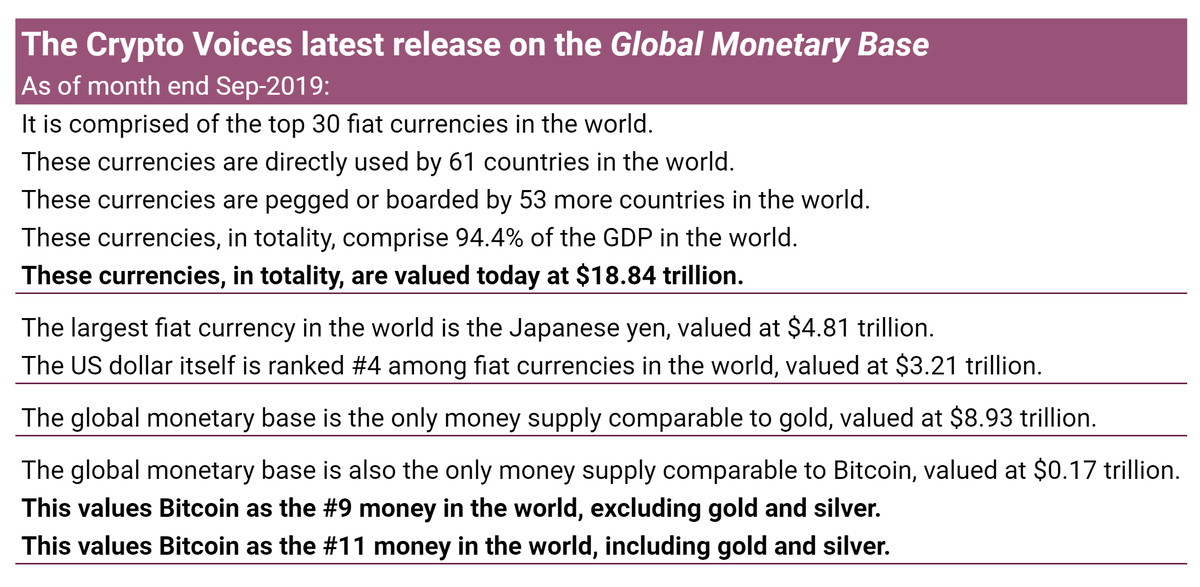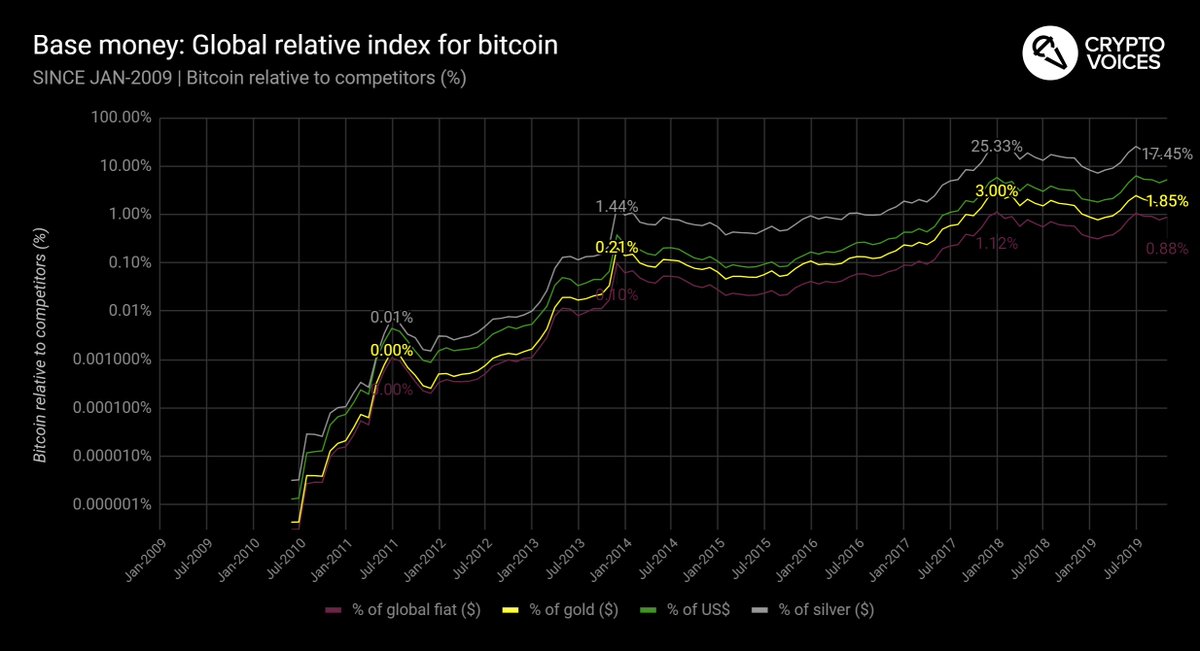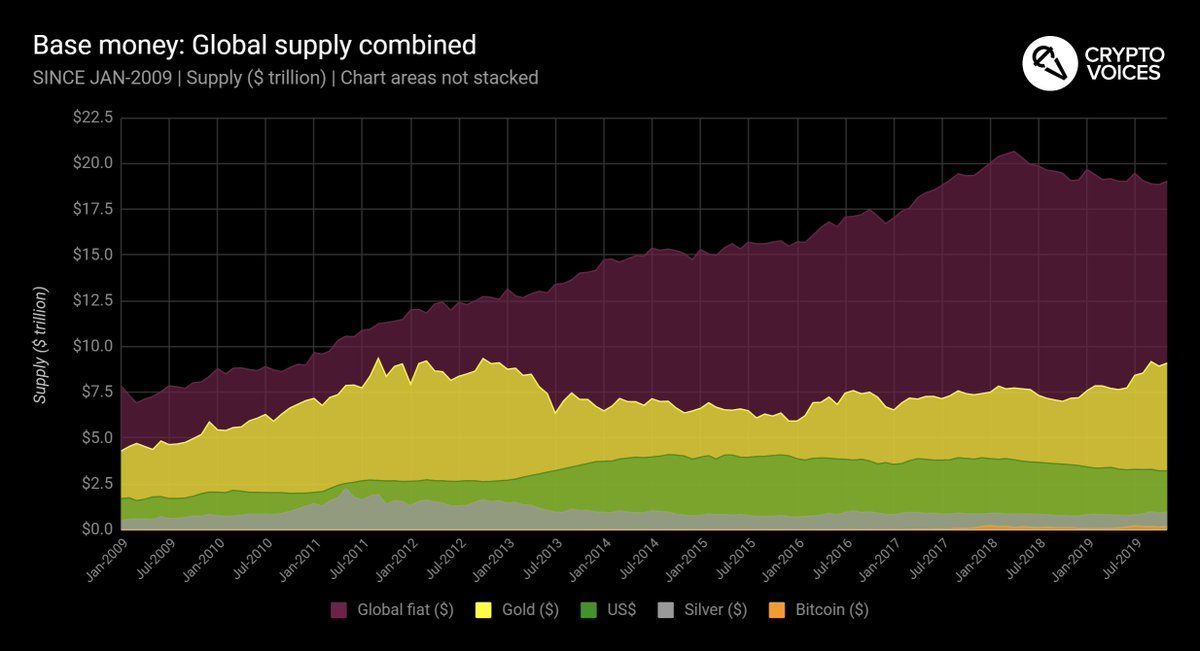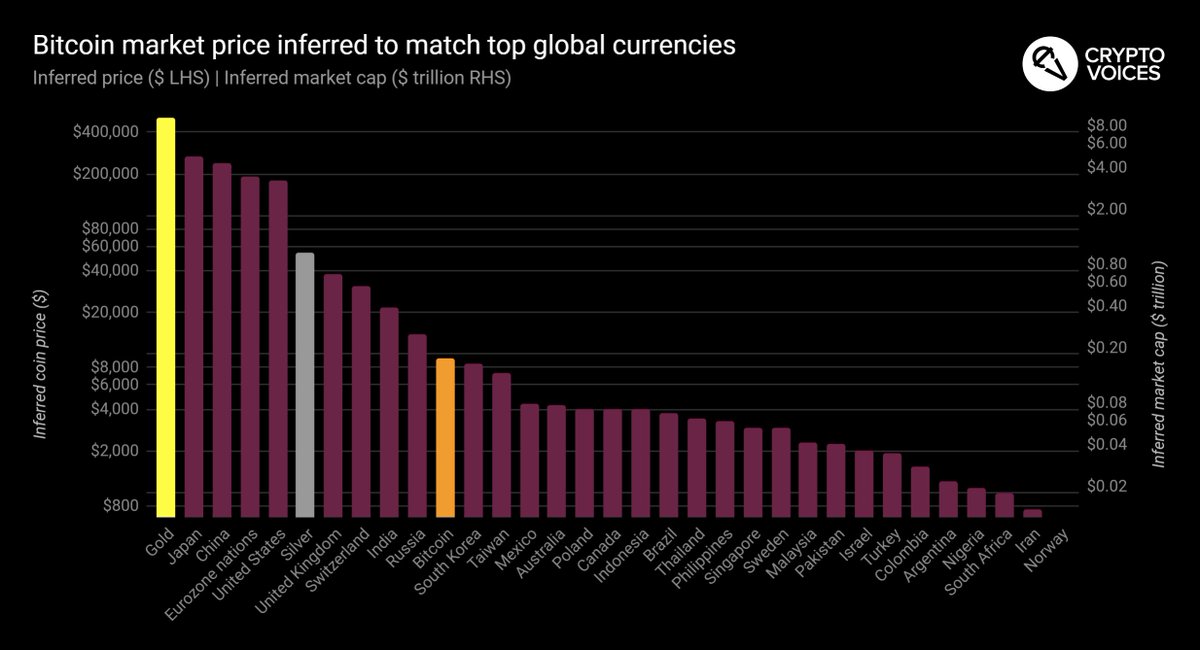
Gold: 1.8% (39 yr-doubling)
Silver: 1.5% (48 yr-doubling)
US$: 8.5% (8.5 yr-doubling)
Global fiat: 12.4% (6 yr-doubling)
50 BTC (2009) to 21 million BTC (2141): 10.4%







Keep Current with Crypto Voices
This Thread may be Removed Anytime!
Twitter may remove this content at anytime, convert it as a PDF, save and print for later use!

1) Follow Thread Reader App on Twitter so you can easily mention us!
2) Go to a Twitter thread (series of Tweets by the same owner) and mention us with a keyword "unroll"
@threadreaderapp unroll
You can practice here first or read more on our help page!

